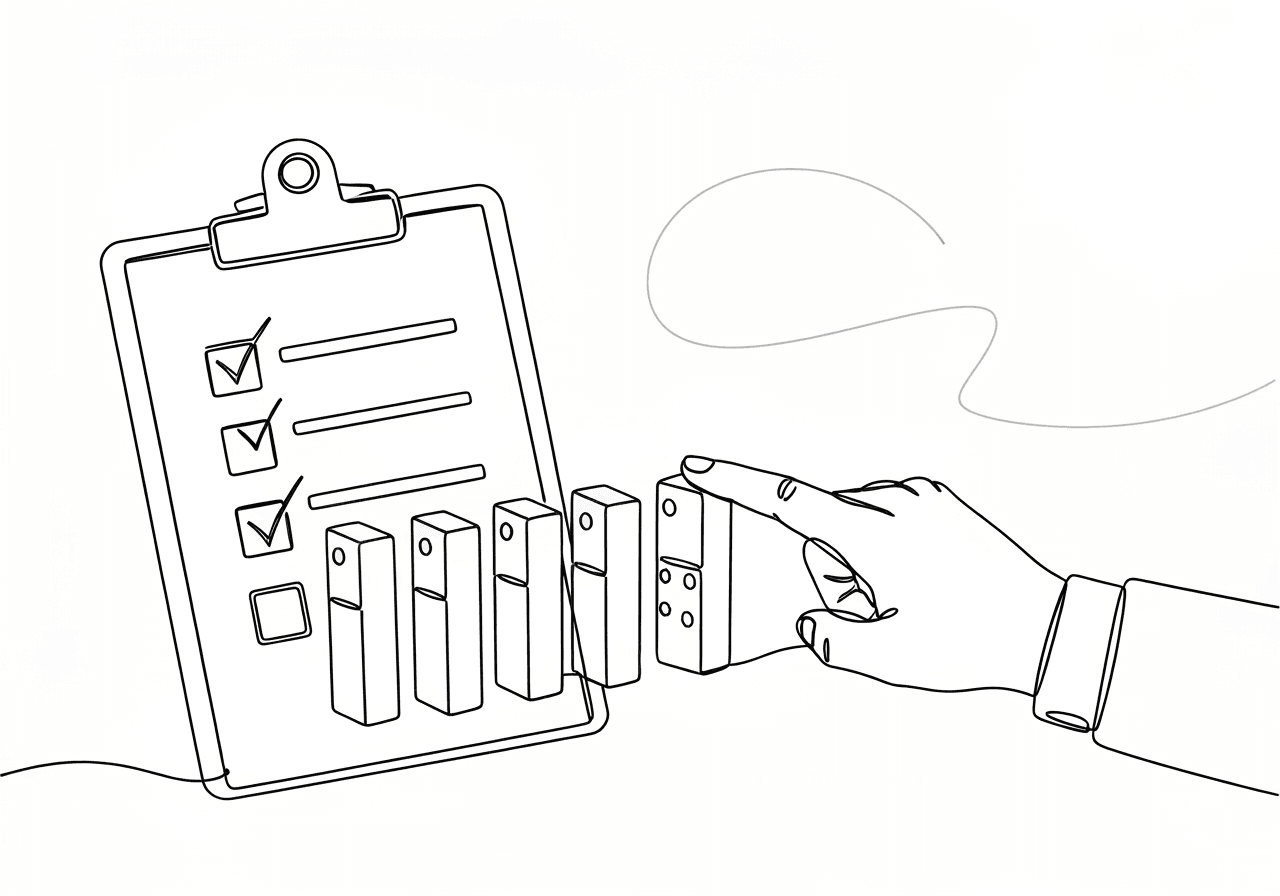Essential Guide to BCBA Procedural Drift Documentation

In ABA therapy, quick adaptations are often needed, but even solid plans can slip without steady follow-through. BCBA procedural drift documentation plays a key part in safeguarding treatment outcomes. It tracks gradual deviations from protocols—known as procedural drift—that can undermine client progress. As a BCBA, you handle ensuring high treatment integrity. Yet research points to real challenges: a 2022 review in Behavior Analysis in Practice found that only 46.83% of studies reported such data DiGennaro Reed et al. (2022). This gap risks ineffective interventions and ethical issues under BACB guidelines.
This article covers treatment drift's effects, procedural integrity (PI) checks, a step-by-step guide to treatment integrity checklists, using observational data for drift detection, and mitigation strategies. You'll get practical tools to keep fidelity strong and help your team succeed.
Key Takeaways
- Procedural drift erodes intervention effectiveness over time, but regular PI checks catch it early.
- Treatment integrity checklists provide a simple way to measure and document adherence to protocols.
- Observational data helps BCBAs spot patterns in drift, like drops in fidelity scores.
- Strategies such as BST and targeted feedback can correct drift and boost team performance.
- Consistent BCBA procedural drift documentation supports ethical practice and better client outcomes.
Understanding Treatment Drift and Its Impact on ABA Interventions
Treatment drift, or procedural drift, means the unintentional shift from a prescribed intervention protocol as time passes. Staff might start strong, but small changes—like tweaking prompt timing or reinforcement—build up and cut fidelity. The Behavior Analyst Certification Board (BACB) stresses that keeping procedural integrity matters for ethics, since drift can mix up behavior changes and credit wrong methods BACB Ethics Code for Behavior Analysts (2020).
Low integrity hurts internal validity. It becomes tough to tell if results come from the intervention itself. For example, skipping steps (omission errors) slows skill building. Adding wrong actions (commission errors) might even strengthen problem behaviors. In clinics, this drift hits efficacy, client safety, and rules compliance.
In my experience as a BCBA, spotting drift early through documentation lets you fix it fast. That keeps interventions strong and true to ABA's evidence base.
The Role of Procedural Integrity Checks in ABA Fidelity
Procedural integrity (PI) checks, or ABA fidelity checks, review how well interventions match the behavior intervention plan (BIP). They gauge adherence in areas like dosage (how often and how long) and accuracy (right steps). Peer-reviewed work defines PI as how closely the treatment—the independent variable—follows the plan Codding et al. (2009).
These checks matter for BCBAs because they build accountability, especially when overseeing RBTs. They also aid data-based choices under BACB Task List item H-6 BCBA Task List (5th ed.). Skip them, and drift hides, stalling progress or breaking ethics. Regular checks give clear feedback that boosts team morale.
You can do PI checks through direct observation or self-review. Aim for scores like 80-100% fidelity as targets. In my supervision routines, weaving them in creates a focus on accuracy. That lifts intervention results right away.
Step-by-Step Guide to Creating and Using a Treatment Integrity Checklist
A treatment integrity checklist documents PI in a structured way, fit to your BIP's parts. Break the intervention into clear steps you can measure. Think "deliver prompt in under 5 seconds" or "reinforce right after a correct response."
Practitioner guidelines outline this process:
-
Team up and outline parts: Work with your group to note main elements from the BIP. Add operational definitions for sharpness, as suggested by the National Center for Intensive Intervention Writing Operational Definitions.
-
Build the checklist: Keep it basic with yes/no options or percent scales. Sample items:
- Did the antecedent match the script? (Yes/No)
- Did dosage hit the mark (e.g., 10 trials in 15 minutes)? (Observed/Notes) Digital tools like Google Forms or ABA apps make tracking smooth.
-
Train and roll out: Go over the checklist in training until everyone gets it. Then watch at least 20% of sessions at first, scoring fidelity as it happens ABA Practice Guidelines for Funders and Managers.
-
Log and assess: Note the date, who observed, score, and deviation details. Figure integrity as (correct steps divided by total steps) times 100.
A 2024 guide backs this as practical and aligned with BACB rules Ferguson et al. (2024). See our BCBA Procedural Fidelity Checklist: Essential H-6 Guide for checklist ideas.
Identifying and Measuring Treatment Drift Using Observational Data
PI check observations spot drift by tracking accuracy (right steps) and dosage (planned frequency and strength). Set a baseline fidelity score right after training. Then check weekly or every other week for procedural drift monitoring.
To gauge it:
- Gather data steadily: Bring in separate observers for agreement (target 90% or better). Follow percent of correct steps per session.
- Check trends: Watch for drops, say from 95% to 75% fidelity. Signs often include uneven prompts or less reinforcement.
- Link to effects: Match PI scores with behavior logs; poor integrity ties to slower gains.
The BCBA Task List calls for data that covers all key areas to skip bias BCBA Test Content Outline (6th ed.). Log results in notes and note triggers like tiredness. In ABA, this drift monitoring shifts data to real fixes. It stops small errors from growing big.
Our BCBA Procedural Integrity Procedures: How-To Guide dives into these steps.
BCBA Procedural Drift Documentation: Practical Strategies to Address and Correct Treatment Drift
After finding drift, use proven methods like feedback and retraining. Give quick, targeted verbal or written notes after watching. Point out what's working and what needs tweak.
Top approaches:
- Behavioral Skills Training (BST): Mix teaching, demos, practice, and feedback to restore skills. Studies confirm BST cuts drift well in ABA Scaling Up Behavioral Skills Training.
- Focused retraining: Run drills on weak spots, then ramp up checks (like full observation at start).
- Lasting help: Share progress graphs for motivation and link to growth goals. Fix roots, like heavy loads, by adjusting cases.
BACB rules guide these for solid oversight BACB Supervisor Training Curriculum (2022). Try our Master BCBA RBT Performance Feedback Documentation for logging tips.
These steps build lasting fidelity. Clients and your practice both win.
Frequently Asked Questions
What causes procedural drift in ABA interventions?
Drift comes from things like weak starting training, staff changes, or setup limits that push shortcuts. A 2022 PMC piece notes omission errors from tiredness as common, pushing for steady checks to spot signs early Ferguson et al. (2024).
How can treatment integrity checklists help minimize drift?
Checklists offer a straightforward guide for steps, keeping sessions uniform. Scoring adherence in observations spots shifts fast. Research links regular use to higher fidelity A Practitioner's Guide to Measuring Procedural Fidelity.
What percentage of ABA studies report treatment integrity data?
From 2008-2020, a Behavior Analysis in Practice review showed 46.83% included it, pointing to ongoing documentation shortfalls DiGennaro Reed et al. (2022).
How does low procedural integrity affect client outcomes?
It slows behavior shifts or accidentally boosts bad habits, cutting intervention power. Work shows fidelity under 80% links to weaker results, making high standards a must for BCBAs Codding et al. (2009).
What are best practices for providing feedback to correct drift?
Give feedback soon and tie it to seen actions, with praise for good work. BACB suggests pairing it with retraining for real change BACB Ethics Code (2020).
How often should BCBAs conduct ABA fidelity checks?
It varies by risk, but guidelines recommend 20-30% of sessions for steady teams. Bump to 100% after training or drift signs. This fits resources with strong fidelity ABA Practice Guidelines for Funders and Managers.
BCBA procedural drift documentation goes beyond rules—it's core to ethical, strong ABA work. Focus on PI checks and aimed fixes to keep treatments on track. That maximizes client progress and hits BACB marks. Studies back that steady monitoring stops drift's quiet damage to fidelity, leading to solid outcomes IMPACT OF TREATMENT INTEGRITY ON INTERVENTION EFFECTIVENESS.
To start now:
- Review your checklists against BIP parts and sharpen details.
- Set weekly PI watches, logging scores in tools like Praxis Notes.
- Teach your team feedback steps, watching gains in a month.
Use these fidelity documentation strategies to strengthen oversight. Your clients and staff will see the difference.
(Word count: 1,312)
Popular in Compliance & HIPAA
- 1
BCBA Procedural Fidelity Checklist: Essential H-6 Guide
1,2466 min read - 2
ABA Documentation Checklist: RBT Compliance Guide 2025
1,2399 min read - 3
RBT Renewal Competency Documentation Guide for BCBAs
1,1796 min read - 4
BCBA Service Discontinuation Ethics: BACB Guide
7586 min read - 5
BCBA Ethical Documentation Best Practices
6526 min read
Popular in Compliance & HIPAA
- 1
BCBA Procedural Fidelity Checklist: Essential H-6 Guide
1,2466 min read - 2
ABA Documentation Checklist: RBT Compliance Guide 2025
1,2399 min read - 3
RBT Renewal Competency Documentation Guide for BCBAs
1,1796 min read - 4
BCBA Service Discontinuation Ethics: BACB Guide
7586 min read - 5
BCBA Ethical Documentation Best Practices
6526 min read
Related Resources
Explore more helpful content on similar topics

Essential Guide to BCBA Service Transition Documentation
Master BCBA service transition documentation: Follow BACB ethical guidelines, use client transition checklists, and prepare key documents for seamless handoffs. Avoid common pitfalls and ensure compliance today.

BCBA Mandatory Self-Reporting: The 30-Day Rule Guide
Navigate BCBA mandatory self-reporting with our comprehensive guide to the 30-day rule. Discover event categories, step-by-step documentation, and consequences to maintain BACB ethics compliance and avoid penalties.

BCBA Fieldwork Documentation Audit Guide: Key Tips
Facing a BCBA fieldwork documentation audit? Discover essential BACB requirements, M-FVF forms, common red flags, and the 7-year retention rule to ensure compliance and boost your certification journey.